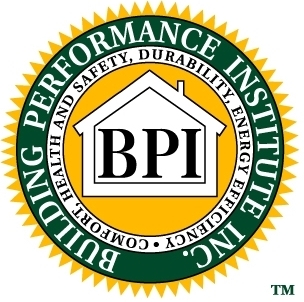 Another week, another class… this time I am in a BPI Building Analyst class being taught by Thabani Banda of Clean Edison. As we mentioned in the RESNET Series, we are going to look into what, if any differences there are between the RESNET & BPI Certifications. We are also going to compare the differences in the training between one of Atlanta’s premium “green” providers and trainers and one of BPI’s top trainers.
Another week, another class… this time I am in a BPI Building Analyst class being taught by Thabani Banda of Clean Edison. As we mentioned in the RESNET Series, we are going to look into what, if any differences there are between the RESNET & BPI Certifications. We are also going to compare the differences in the training between one of Atlanta’s premium “green” providers and trainers and one of BPI’s top trainers.
Certifications:
One of the biggest differences is that RESNET combines the bulk of their training into one certification (the HERS Rater), while BPI splits theirs up. For BPI, you can be personally classified for only performing audits, whereas if your company wants to be a “BPI Contractor” it requires one to also take a specialty class. I will be taking the Envelope Shell class in June, while others may choose the Multi-Family, HVAC, Manufactured Housing or Heating depending on their organization. As of 2 weeks ago, RESNET started offering a “Contractors” certification, but that appears to be a
The classes / classroom environment:
Southface will win this one hands down, seeing they own their own LEED certified facility setup for training. With that being said, for any training company – if you require people to bring their laptops for training &/or testing; you might want to bring a few surge strips and cable protectors are available. Needless to say, there were not enough power outlets available & there were a few power cables being kicked loose today. Southface also wins on the food provided, while Clean Edison will simply state – the restaurants are that way…
The training:
While you are required to take a class for RESNET, you can actually test out on the BPI portion and halfway through I was itching just to take the test. I will admit some of it could be because I went through almost the same information, just last week. I really cannot say that it is the trainers fault, but this simply feels more like “Boot camp” style training. Last week in the RESNET class, we spent ½ a day going over the math followed by a full day of Building Science information, whereas today we went through all that information in less than 3 hours with plenty of “you may see this again” information. With that being said, if I was take the RESNET system & apply it to the BPI part, I might run into a few problems as there are some differences that one must know about.
TITO:
Testing In (baseline reading) & Testing Out (was the work done properly) is required by BPI for Air Sealing Work, Duct Sealing Work, Adding Attic Insulation, or working on 15% or more of the exterior buildings insulation. This is one major departure from RESNET; RESNET simply recommends that, but does not require it.
Duct Blaster Testing:
This one surprised me, while this is a major tenant of the RESNET HERS Rating; it is not required under BPI’s Building Analyst portion. With that being said, it is required under the envelope portion, and probably the HVAC portion also.
Blower Door Tests:
This is another area, where you can see some major differences – BPI is firmly entrenched with the older ASHRAE .35 system, whereas RESNET supports either the older one or the 06 version. THE RESNET rating will not improve if you do get the envelope tighter than .35, but they feel that both are acceptable which I tend to agree with. What is the .35 standard? It is actually based on the highest number of two different formulas – each house needs at least 15 CFM of ventilation* for every person living there or .35 air changes per hour based on the volume.
The 06 version is based on combing two numbers; 1 CFM for every 100 SF of conditioned space plus 7.5 CFM of ventilation for every person living there plus. The formula for every person living there is actually based on the number of bedrooms – the number of bedrooms plus one equals the amount of people there.
A few of the other changes is that RESNET has both the volume measurement listed above along with an Envelope Leakage Factor, whereas BPI relies solely on the volume measurement. The one issue with the volume measurement is that it favors a larger house as compared to a smaller house or one with above average ceiling heights. One other factor is how they handle what is called an ACHn factor. BPI breaks it down into 4 areas without a description, while RESNET breaks it down into 3 different areas based on its exposure.
Insulation factors:
For RESNET, unless you can visually verify its installation, or verify it via Infrared Scanning, you automatically grade it at the lowest level installation quality (Level III), while BPI utilizes a good, fair, or poor rating based almost solely on ones assumption. One other item I noticed is that BPI has a simplified effective value formula. In RESNET’s program, we can change the figures for OVE framing and other items, while BPI simply says that a 2×4 wall with a “good” installation equates with an effective R-Value of nine.
